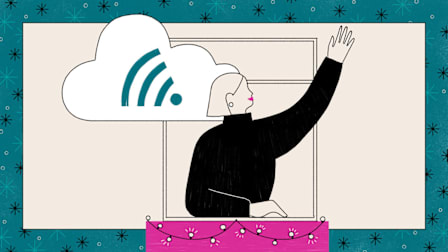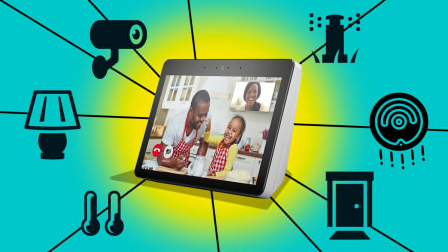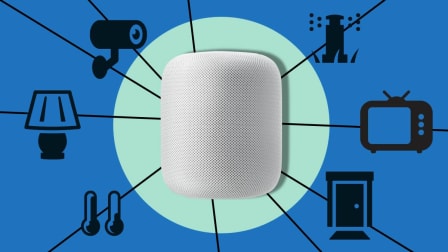5 Things to Know Before You Buy a Smart Sprinkler Controller
Plus, CR's top-rated sprinkler timers from Orbit, Rachio, and Rain Bird
When you shop through retailer links on our site, we may earn affiliate commissions. 100% of the fees we collect are used to support our nonprofit mission. Learn more.

Keeping your lawn or garden properly hydrated using an in-ground sprinkler system can be a real chore, especially if you live in an area of the country prone to drought. You need to adhere to local water restrictions, program the system controller to prevent overwatering (or pay a pro to do it), and hope you’re around to shut off the system to save water—and money—if it ever does rain.
Smart sprinkler controllers aim to address those pain points. Just as smart thermostats have revolutionized the way homes are heated and cooled, automatically adjusting indoor temperature based on your habits, a smart sprinkler controller adjusts watering depending on the weather. These electronically controlled devices, which typically cost around $80 to $300, replace the existing programmable timer on your sprinkler system to open and shut the water valves. So instead of following a set schedule, your sprinkler can follow the forecast. Best of all, these models can be programmed more easily to adhere to water restrictions thanks to their smartphone app controls.
1. WaterSense Certification Is a Must
Some sprinkler controllers carry the Environmental Protection Agency’s WaterSense certification for watering efficiency and conservation, just as some home appliances carry the Energy Star certification for energy efficiency. In order to receive a WaterSense certification, sprinkler controllers must incorporate local weather data and/or soil moisture readings into their watering schedules instead of simply functioning as on/off timers.
According to the EPA, a WaterSense sprinkler controller can save the average U.S. home up to 15,000 gallons of water per year, which is enough water to fill a 12x24-foot swimming pool that’s 7 feet deep. That means that if every U.S. home with an automatic sprinkler system made the switch to a WaterSense controller, the U.S. could save 390 billion gallons of water every year.
All of the systems we test carry a WaterSense certification, but that doesn’t mean they all have the same watering schedules. That’s due to differences in the weather reports each model uses. Our tests account for these differences. How accurately a controller’s watering schedule adjusts to the weather shows up in our weather responsiveness rating. “We found that some systems made more granular changes than others, thanks to more sophisticated sets of weather data,” Ciufo says.
To see which systems are most effective, check our complete ratings chart.
2. Know Your System’s Watering Zones
In-ground sprinkler systems are made up of multiple zones of tubing and sprinkler heads. The system then sends water to each zone one at a time because homes usually don’t have enough water-flow capacity to supply all the zones at the same time. Controllers are sold based on the number of zones they can handle.
Most of the controllers we tested can handle seven or eight zones, and many offer variants that can handle more. For example, the eight-zone Rachio 8ZULW-C sprinkler controller, about $200, also comes in a 16-zone version for about $50 more. Make sure to check the number of zones a system has before purchasing a new controller. If you buy a controller that doesn’t have enough zones, it won’t be able to water all the necessary areas.
3. Installation Involves Rewiring
If you’re not comfortable doing wiring of any sort, you’ll need to hire a professional to install your smart sprinkler controller. That said, the wiring that’s involved is low-voltage—just like for video doorbells—and you can install the device yourself using the manufacturer’s instructions. The process is similar to installing a thermostat to control an HVAC system. You simply insert the proper wiring into designated terminals.
4. Consider the Controls
Most of the models we test allow you to operate them using the manual controls on the device itself and via an app on a smartphone. All work with digital assistants and/or smart home systems—such as Amazon Alexa, Apple Home (formerly HomeKit) and Siri, Google Home/Assistant, and Samsung SmartThings—so you can tell your sprinkler system what to do or integrate it with other smart home products. Think about the most convenient way for you to control your sprinkler system, and be sure to check for those features when you shop.
5. Not All Controllers Are Weatherproof
It’s somewhat surprising, but only two of the controllers we tested are weatherproof. The rest either have to be installed indoors or you have to purchase an additional weatherproof housing for them, which costs about $30 for the models in our tests.
3 Superb Smart Sprinkler Controllers
Here are three of the best smart sprinkler controllers from our ratings, arranged in alphabetical order. CR members with digital access can see ratings and reviews for each one. All of them feature the EPA’s WaterSense certification and come in multiple versions for varying numbers of zones.


























